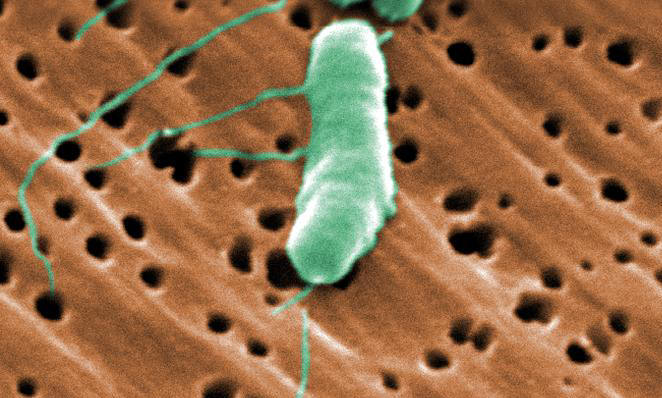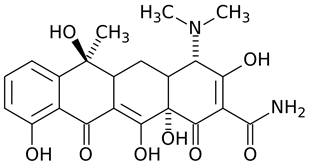Vibrio vulnificusOverview: Vibrio Vulnificus is a Gram-negative bacterium that is not well recognized by many microbiologists, and almost not at all by the general public, even though it is responsible for 95% of all seafood deaths in the United States (Figure 1). V. vulnificus belongs to the same family as the bacterium Vibrio cholerae, which is the causative agent of cholera. V. Vulnificus is normally found in marine or estuarine environments, including brackish ponds and coastal areas. The bacteria can be isolated from seawater and sediment, as well as plankton and shellfish (oysters, clams, and crabs). Therefore, infection by V. vulnificans usually occurs through the consumption of infected seafood or from swimming in infected waters with an open wound. V. vulnificans most commonly infects those who are immunocompromised, especially those that suffer from chronic liver disease, leading to mild to severe gastrointestinal illness, potentially progressing to septicaemia, with a significant mortality rate among susceptible populations. Figure 1. This scanning electron micrograph depicts a flagellated Vibrio vulnificus bacterium [13184 X]. V. Vulnificus moves via a single flagellum and is slightly curved in shape (Figure 2). It is considered a moderate halophile, and thrives in warm seawater. As a Gram-negative bacterium, V. Vulnificus produces lipopolysaccharide (LPS) in its outer membrane. The bacteria can also be enclosed in a capsule, or have no capsule; this characteristic relates to species virulence. Figure 2. This colorized scanning electron micrograph depicted a flagellated Vibrio vulnificus bacterium [26367 X]. Virulence: The primary indication that a particular strain of V. Vulnificus may be virulent is the presence of a capsule. Strains that are capsulated are pathogenic, while those without a capsule are not. This can be determined by observation of colonies, as noncapsulated V. Vulnificus colonies appear translucent. This bacterium can be broken up into two biotypes, namely, one that invades humans, and a second that invades shellfish or fish. V. vilnificus has type IV pili (fimbriae) which are required for virulence (Figure 3). These fimbriae are what allows the bacteria to bind to human epithelial cells and is a key factor in the virulence of the bacteria. The receptor for the fimbrae has not yet been elucidated. Yet another virulence1 factor recently determined for V. vilnificus, is the presence of an RTX toxin that creates pores in red blood cells, depolymerizes actin, and causes necrotic death of some cells (Gulig et al., 2005). Figure 3. Electron micrograph of Vibrio vulnificus with arrows pointing to several fimbriae. Clinical Infections and Diagnosis: In normal individuals, infection with V. Vulnificus generally results in vomiting, diarrhea, and abdominal pain. However, if a person is immunocompromised (particularly suffering from chronic liver disease) the bacteria can invade the bloodstream and cause primary septicemia (whole body inflammation in response to an infection) which is characterized by fever, chills, decreased blood pressure (septic shock), and death. 70% of these cases are accompanied with blistering skin lesions. V. vulnificus can be diagnosed via the individual's stool or blood. PNCC broth (peptone, NaCl, cellobiose with colistin methanesulfate) (Hsu et al., 1998) can be used to increase low levels of V. Vulnificus while selecting for other types of bacteria. Generally, healthcare providers should notice the combination of gastrointestinal illness (vomiting, diarrhea, abdominal pain) presenting after the ingestion of oysters (or other seafood) should bring V. Vulnificus to the top of the list as possible pathogens. Additionally, V. Vulnificus will affect males more than women, where 85% of cases resulting in endotoxic shock are males. It has been show experimentally that estrogen has a protective effect against V. Vulnificus. (Merkel et al., 2001). Treatment: V. vulnificus infection can be treated if infection is caught early enough through the use of the antibiotic tetracycline or 3rd generation cephalosporin (Figure 4). Figure 4. Chemical structure of tetracycline. References: Gulig, P., Bourdage, K., and Starks, A. (2005) Molecular Pathogenesis of Vibrio vulnificus. Journal of Microbiology, 43(S): 118-131. Hsu, W., Wei, C., and Tamplin, M. (1998) Enhanced Broth Media for Selective Growth of Vibrio vulnificus. Applied and Environmental Microbiology, 64(7): 2701-2704. Merkel, S., Alexander S., Zufall, E., Oliver, J., and Huet-Hudson, Y. (2001). Essential Role for Estrogen in Protection against Vibrio vulnificus-Induced Endotoxic Shock. Infection and Immunity, 69 (10): 6119–6122. |




